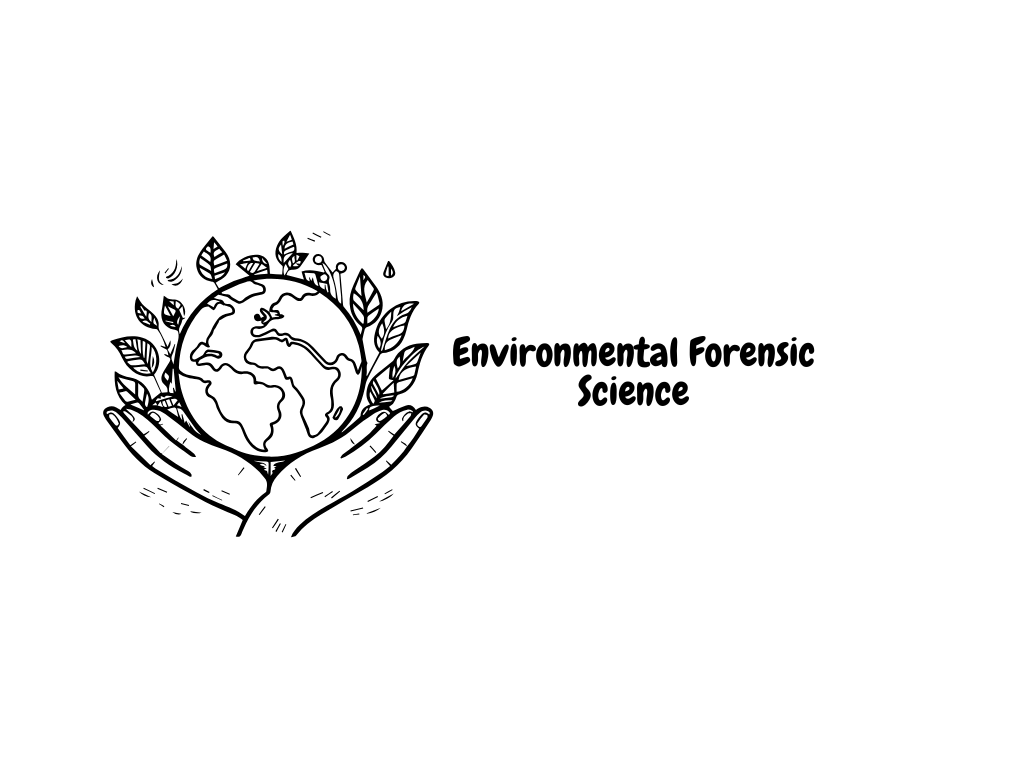Definition-Environmental Forensic Science
Environmental forensics refers to a specialized scientific discipline focused on investigating and resolving questions related to environmental pollution, particularly when legal accountability is involved. This field goes beyond routine laboratory testing or predictive modeling; it blends analytical science, engineering judgment, and legal insight to trace the origin, timing, and extent of environmental damage. Environmental forensic Science experts aim to clarify technically complex scenarios, often involving multiple responsible parties or sources, in order to support fair and evidence-based outcomes in regulatory or legal settings.
Disciplines Involved
Chemistry
Toxicology
Geology
Hydrogeolog
Microbiology
Meteorology
Engineering
Law
Ecology
Modeling
Statistics
Geophysics
Pollution

Human-Made
Industries
Production units that release waste into the air, water, and land.
Transport
Vehicles like cars, buses, planes, and ships that emit harmful gases and particles.
Farming
Agricultural activities using chemicals and livestock that pollute land and water.
Homes
Daily household waste, cleaning products, and plastic use contribute to pollution.
Construction
Building activities that create dust, noise, and debris.
Mining
Digging for resources like coal or metals can harm land, water, and air.
Waste Handling
Garbage dumps, sewage, and burning waste release toxins into the environment.
Power Plants
Facilities that produce electricity can emit heat, smoke, or radioactive material.
Natural
Volcanic Eruptions
Release gases and ash into the air and surrounding areas.
Forest Fires
Naturally started or lightning-triggered fires that pollute the air with smoke.
Dust Storms
Strong winds carry dust across regions, reducing air quality.
Earth’s Natural Radiation
Some rocks and soil give off radiation naturally (e.g., radon gas).
Types of Pollutant
Air Pollutants
Contaminants that affect the air we breathe.
Water Pollutants
Substances that make rivers, lakes, and oceans dirty or unsafe.
Soil Pollutants
Chemicals or waste that harm the ground and plants.
Noise Pollution
Loud sounds that disturb people and animals.
Heat Pollution
Release of heat into water or air, changing natural temperatures.
Radiation Pollution
Dangerous energy from radioactive sources.
Light Pollution
Too much artificial light that blocks natural darkness.
Plastic Waste
Plastic items that don’t decompose and harm land and sea life.
Chemical Pollutants
Toxic compounds from factories, cleaning agents, or farming.
Biological Pollutants
Harmful germs or organisms that cause diseases.
Heavy Metals
Toxic metals like lead and mercury that accumulate in soil and water.
Dust & Particles
Tiny solids or liquids floating in the air, often from smoke or dust.
Indicators
Bioaccumulation
Observation: Elevated pollutant levels in tissues of local organisms exceeding natural background levels.
Toxicity Testing
Observation: Adverse effects on bioassay organisms such as mortality or inhibited growth.
Microbial Analysis
Observation: Presence and abundance of specific bacteria or fungi characteristic of pollution types.
Food Chain Disruption
Observation: Evidence of toxin transfer and biomagnification across species in an ecosystem.
Material Corrosion
Observation: Accelerated rusting or structural degradation of metals in contaminated environments.
Radiological Testing
Observation: Elevated radiation levels measured by Geiger counters or scintillation detectors.
pH Measurement
Observation: Abnormal pH values in soil or water samples compared to natural baselines.
Chemical Fingerprints
Observation: Presence of unique chemical compounds or mixtures specific to a pollution source, identifiable through chromatography or mass spectrometry.
Remote Sensing
Observation: Satellite or aerial images showing vegetation stress, plumes, or discolored water.
Spatial Distribution
Observation: Mapping shows gradients or plumes of contaminant concentration spreading from a source.
Soil Property Changes
Observation: Alterations in soil texture, color, or chemical composition compared to uncontaminated sites.
Degradation Products
Observation: Detection of pollutant breakdown compounds indicating age and type of contamination.
Odor Analysis
Observation: Detection of unusual or chemical odors near suspected contamination sites.
Water Flow Alterations
Observation: Changes in groundwater or surface water movement patterns detected by hydrogeological studies.
Physical Evidence
Observation: Tangible items linked to pollution, like waste containers, debris, or soil with unusual characteristics.
Sediment Analysis
Observation: Accumulation of heavy metals or pollutants in sediment layers beyond natural levels.
Temperature Anomalies
Observation: Elevated or reduced temperatures in water bodies or soil relative to natural conditions.
Isotopic Analysis
Observation: Distinct isotopic ratios (e.g., nitrogen-15/nitrogen-14) that differ between natural and anthropogenic sources.
Forensic Techniques
Chemical Analysis Techniques
Gas Chromatography (GC
Gas Chromatography-Mass Spectrometry (GC-MS)
Liquid Chromatography-Mass Spectrometry (LC-MS)
Fourier-Transform Infrared Spectroscopy (FTIR)
Atomic Absorption Spectroscopy (AAS)
Inductively Coupled Plasma Mass Spectrometry (ICP-MS)
High-Performance Liquid Chromatography (HPLC)
Ion Chromatography (IC)
Shape
Isotopic Techniques
Stable Isotope Analysis (e.g., δ¹³C, δ¹⁵N, δ³⁴S)
Radiogenic Isotope Analysis (e.g., Lead Isotopes)
Compound-Specific Isotope Analysis (CSIA)
Biological & Microbial Techniques
Microbial DNA Fingerprinting (e.g., 16S rRNA sequencing)
Metagenomics / Microbiome Analysis
Bioassays (toxicity testing on organisms)
Physical & Environmental Measurements
pH and Conductivity Testing
Redox Potential (Eh) Measurement
Soil Texture and Composition Analysis
Temperature and Thermal Profiling
Remote & Spatial Techniques
Geographic Information Systems (GIS)
Remote Sensing (Satellite & Aerial Imagery)
Plume Mapping & Spatial Distribution Analysis
Global Positioning System (GPS) Tracking
Sampling & Field Techniques
Soil and Sediment Sampling
Groundwater and Surface Water Sampling
Air Quality Monitoring (Particulates & VOCs)
Passive Sampling Devices (e.g., SPMDs)
Modeling & Interpretation
Fate and Transport Modeling
Hydrogeological Modeling
Source Apportionment Models (e.g., CMB, PMF)
Multivariate Statistical Analysis (e.g., PCA, cluster analysis)
Functions
Contaminant Source Tracing:
Identifying the origin point or contributing source of environmental pollutants.
Event Chronology Establishment:
Determining the timeframe in which the contamination event likely took place.
Responsibility Attribution:
Assigning legal or financial responsibility for environmental damage.
Cleanup Strategy Design:
Providing technical insight to shape targeted remediation and containment efforts.
Pollution History Analysis:
Reconstructing past environmental conditions to understand how contamination evolved.
Evidence Support in Legal Cases:
Supplying scientifically grounded data for litigation, enforcement, or compliance actions.
Informing Environmental Governance:
Contributing data for environmental risk assessments and shaping regulatory frameworks.


